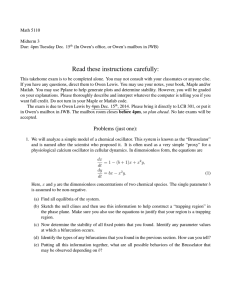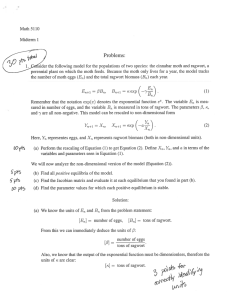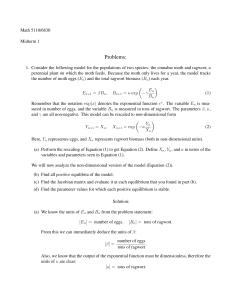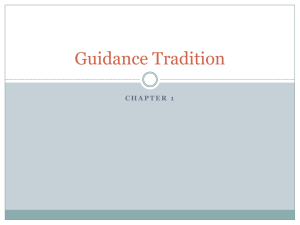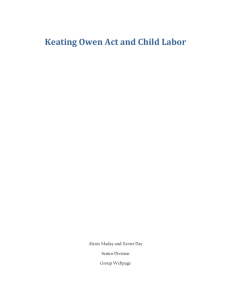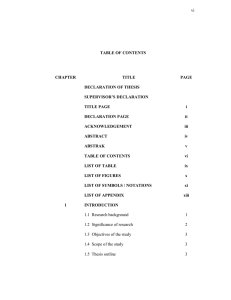Read these instructions carefully:
advertisement
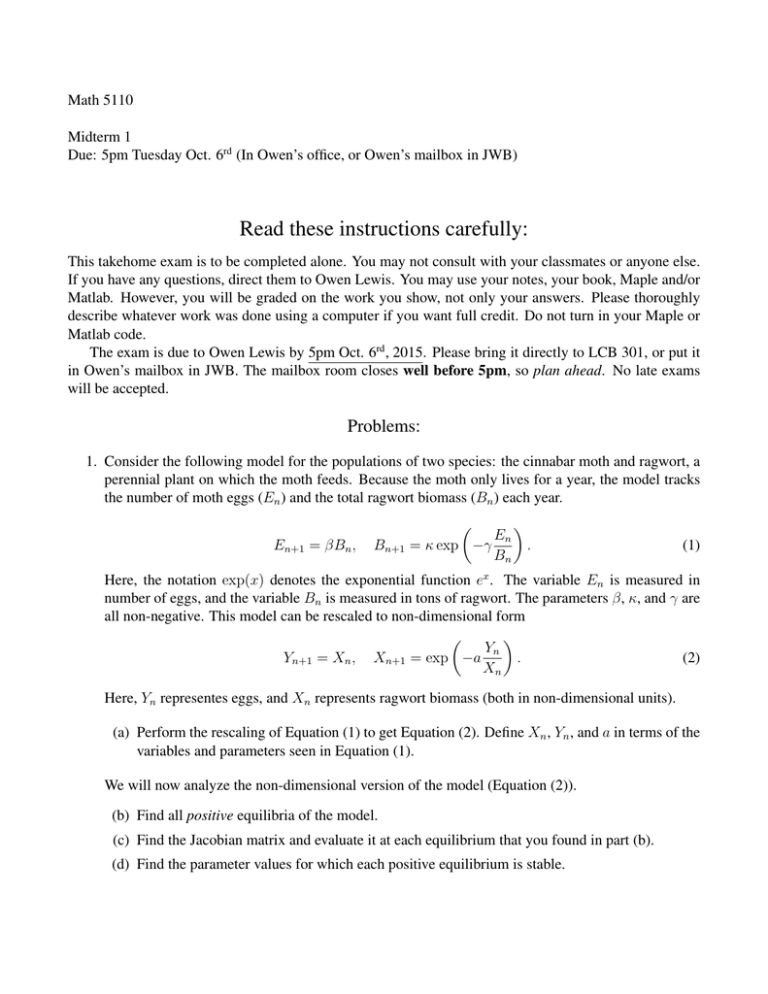
Math 5110 Midterm 1 Due: 5pm Tuesday Oct. 6rd (In Owen’s office, or Owen’s mailbox in JWB) Read these instructions carefully: This takehome exam is to be completed alone. You may not consult with your classmates or anyone else. If you have any questions, direct them to Owen Lewis. You may use your notes, your book, Maple and/or Matlab. However, you will be graded on the work you show, not only your answers. Please thoroughly describe whatever work was done using a computer if you want full credit. Do not turn in your Maple or Matlab code. The exam is due to Owen Lewis by 5pm Oct. 6rd , 2015. Please bring it directly to LCB 301, or put it in Owen’s mailbox in JWB. The mailbox room closes well before 5pm, so plan ahead. No late exams will be accepted. Problems: 1. Consider the following model for the populations of two species: the cinnabar moth and ragwort, a perennial plant on which the moth feeds. Because the moth only lives for a year, the model tracks the number of moth eggs (En ) and the total ragwort biomass (Bn ) each year. En+1 = βBn , Bn+1 En . = κ exp −γ Bn (1) Here, the notation exp(x) denotes the exponential function ex . The variable En is measured in number of eggs, and the variable Bn is measured in tons of ragwort. The parameters β, κ, and γ are all non-negative. This model can be rescaled to non-dimensional form Yn Yn+1 = Xn , Xn+1 = exp −a . (2) Xn Here, Yn representes eggs, and Xn represents ragwort biomass (both in non-dimensional units). (a) Perform the rescaling of Equation (1) to get Equation (2). Define Xn , Yn , and a in terms of the variables and parameters seen in Equation (1). We will now analyze the non-dimensional version of the model (Equation (2)). (b) Find all positive equilibria of the model. (c) Find the Jacobian matrix and evaluate it at each equilibrium that you found in part (b). (d) Find the parameter values for which each positive equilibrium is stable. 2. Consider the following model of a single population in an environment with limited resources: Pn Pn+1 = Pn exp r 1 − . (3) K This equation is sometimes called the discrete form of the continuous logistic model (not to be confused with the discrete logistic model that we saw in class). The parameter K is the carrying capacity of the environment and r is the non-dimensional reproduction of the population. Both are assumed to be positive. (a) Find both equilibria of the model. (b) Determine when each equilibrium is stable. (c) A bifurcation occurs when r = 2 . Determine what type of bifurcation it is and say why.
